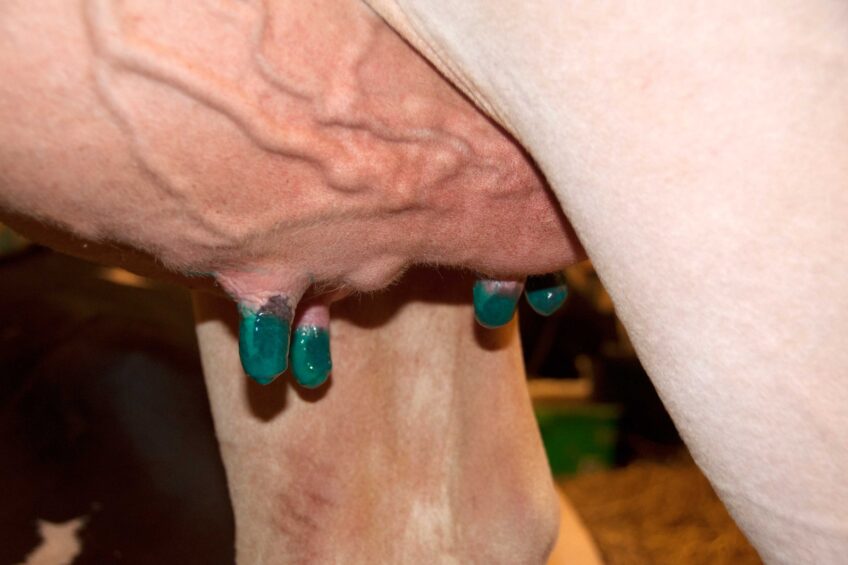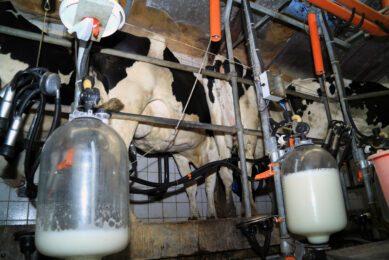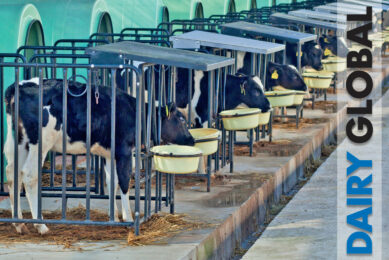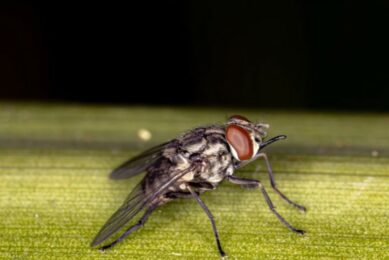Mastitis can be managed

Mastitis management starts with a good plan, and above all, solid understanding of the ?current situation on the farm. A mastitis tool can help gain these insights and lower the ?mastitis incidence in the dairy herd.
“Awareness is the greatest agent for change,” the famous spiritual teacher and writer Eckhart Tolle said. And whether it is about life philosophy, or mastitis management, the idea is the same. Awareness is to have the knowledge or discernment of a situation. When you talk about mastitis, still one of the main economic diseases on a dairy farm, farmers often accept the situation and assume there is simply not so much you can do about it to prevent it. However, sometimes there is lack of awareness that improvement of the mastitis stuation on the farm is possible. Because habits are deeply ingrained and practices are in place for a long time, change can be difficult. Whether the long-standing habits and patterns will successfully be broken is ultimately determined by one’s ability to find and maintain motivation and an action plan.
The situation and the vision
It is important to know the current situation and the vision regarding the problems with mastitis on the farm, before an action plan can be put in place. Questions to be asked may include: What does mastitis represent on my farm and what are the costs related to this pathology? It is not that easy to give an accurate cost for mastitis, as it combines direct costs (the price of the inframammary tubs for instance) and indirect costs such as non-optimum milk production per cow in lactation. Some tools are available to get a clear picture of your mastitis situation. An example of this is the Mastitis Cost Calculator, which is a simple system to calculate the cost of mastitis on a farm. Enter some values such as the number of clinical cases per month, the level of somatic cell count, the production level, the price of the milk and the costs of mastitis for your herd can be obtained (the App is available for iOS and Android devices). The detailed report gained, indicating the impact of clinical mastitis, replacement costs and somatic cell count on your finances can be a real eye-opener. Only then, a farmer can have a clear insight in the current situation concerning mastitis, the monthly somatic cell count results and the monthly percentage of clinical mastitis. The next steps include goals to improve this situation. With this, it is important to ‘begin with the end in mind’. Having the new situation of the farm pictured, is the main step in getting the farm results that you desire. Having the intention to succeed is an essential tool and dairy consultants use questions like: where do you see your farm in five years from now? As a tool to bring a dairy farm to the next level and make it future proof. However, a precsie answer to this question might be diffult for many farmers. Especailly with the end of European milk quota system, many farmers seem a bit ‘lost’ and frankly don’t know where the European milk market is going and where their farm fits in. This makes it even more important for dariry farmers to make a good plan, inlcuding attention for disease prevention, milk quality and profitability. A good and solid plan for mastitis management is thefore pivotal.
The goals
The plan for improvement of the mastitis situation should have a clear definition of the goal. In addition, the goal should have an observable and measurable end result having one or more objectives to be achieved within a more or less fixed timeframe. An example can look like this: a farm of 150 cows, with a fluctuating herd SCC between 200,000 and 350,000. The clinical mastitis percentage is acceptable according to the farmer, but the percentage is not known. The vision of the farmer is to have cows with a healthy udder situation, allowing to obtain the bonus given by his dairy processor. The farmer wants to have a constant SCC of 150,000 throughout the whole year, and a percentage of clinical mastitis of 2 to 3% per month. To set up the goals and objectives, it is essential to have a more detailed description of the situation. Milk testing is also a necessary step for mastitis control: with data on herd level, on animal level and on quarter level a detailed picture can be made about the situation. Transforming data into significant information is the key to obtaining a good action plan. M-Team, a group of veterinarians from the University of Ghent, Belgium and experts in that field – do audits to help dairy farmers improve their mastitis situation and have now developed a concept (Keno-M) to spread their knowledge and strategy worldwide. It works in three steps: first analysis of the situation. Secondly, it shows where to focus, and thirdly, it gives an action plan, at cow level as well as at herd level. The program (Figure 1) was used for the farm described above, and some critical points came out of the analysis. Firstly, decrease the risk of contamination during milking and secondly: improve barn and animal hygiene.

The action plan
With these two critical points in mind, an action plan is built around it by answering: What, How, When and Who?
What?
What are the steps to get less contamination during milking? Action points are to use one single paper towel per cow instead of reusable cloths, change the light bulb of the milking parlour to get a better visibility, to wear gloves and to milk high SCC cows last in the row.
How?
The farmer should be as practical as possible in answering this question. E.g.: To elaborate an action plan to decrease the risk of contamination during milking: First you need to have the material and the data available. In other words, the farmer needs paper towels, light bulb, gloves, SCC individual results. The how will describe exactly how to have the ‘what’ done.
When?
When does the farmer implement the strategic decisions? Are these daily changes? Is it a monthly follow up? In the example above, the three first points are daily routines to be implemented, together with a stock management that can be done on a quarterly basis.
The individual SCC data are usually performed every four to six weeks.
Who?
Last but not least, it is important to define tasks. Who will take care of the paper and gloves stock? When there is no disinfectant sprayed on the teats after milking, too often farmers say that they run out. But who is responsible for buying the spray and keep a close eye on the stock? The SCC data are an underestimated treasure for farmers. Interpreting this data allow farmers to get a wealth of information about what is happening on the farm. Unfortunately, these data is rarely used, as it is often perceived as administrative work, or simply because nobody is taking time to explain and follow the evolution. Having an advisor who follows the mastitis situation every month is of great value to reach the goals of a dairy farmer. Delegating some tasks can be of great value for dairy farmers.
Conclusion
Mastitis is a disease that can be ‘managed’ and dairy farmers can control and improve the mastitis situation on the farm by taking a close look at the current situation, to set goals and to make a good action plan.
For more info and references contact: kenocow@cidlines.com
Join 13,000+ subscribers
Subscribe to our newsletter to stay updated about all the need-to-know content in the dairy sector, two times a week.










